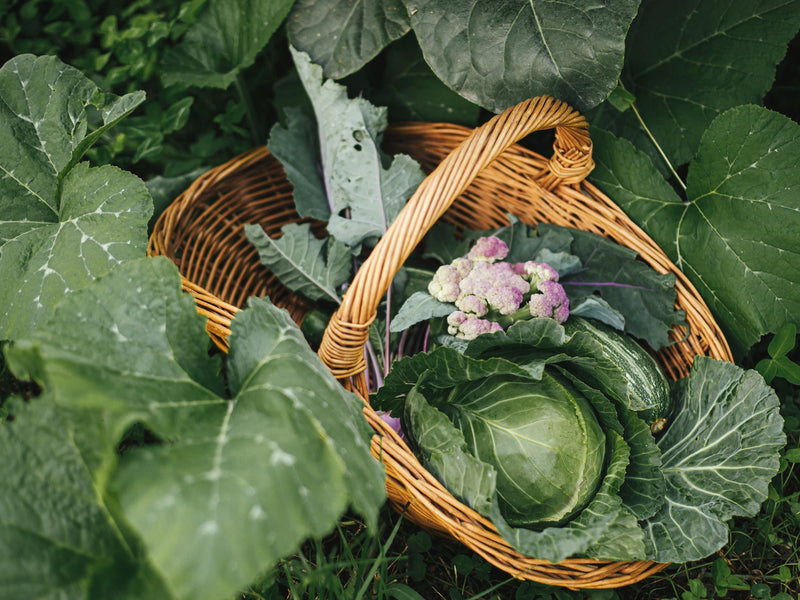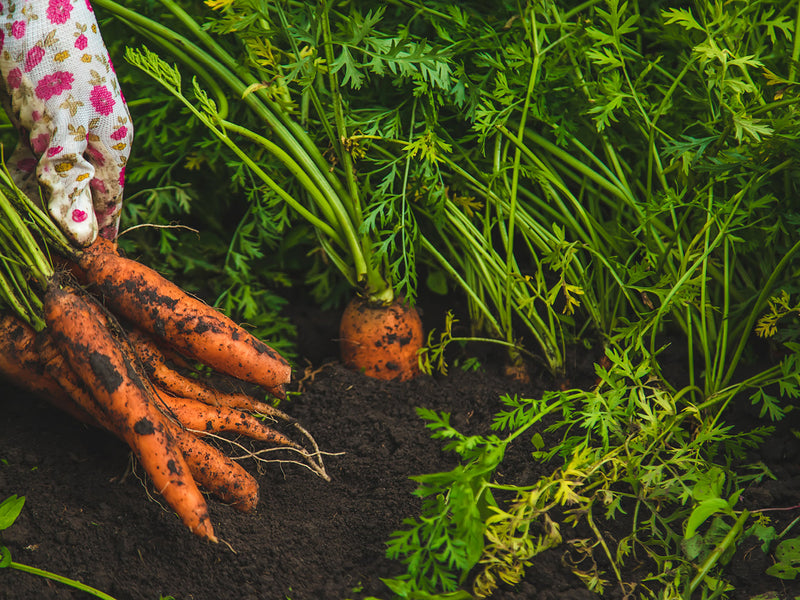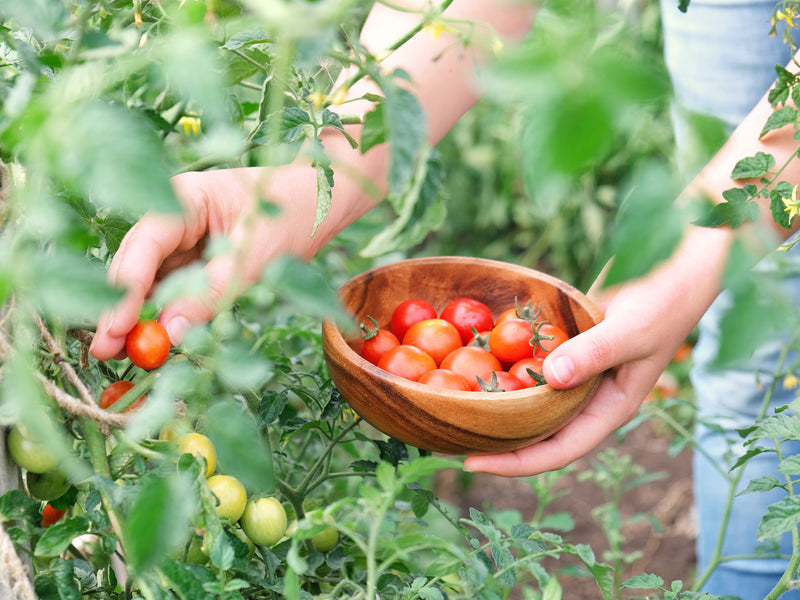Starting an indoor garden is a fantastic idea, especially if you live in a city or have little space outside, or want to get an early start on the growing season. It's like bringing a piece of the outdoors right into your home. Plus, it lets you grow plants all year round, no matter the weather outside.
Getting the lighting right is the key to making your indoor garden a success. Sure, a sunny summer windowsill may be all certain herbs and leafy greens like lettuce or spinach need, but if you want to grow sun-loving plants and grow year-round, you'll need some grow lights. In this article, I want to simplify how to choose a grow light and use it so you can get the most out of your indoor garden.
What Are Grow Lights?
Grow lights are unique lights designed to emit the right light spectrum plants need to grow. They're different from regular bulbs because they cover a range of light similar to what the sun provides. This range includes blue light, which is excellent for leafy growth, and red light, which helps with flowering and fruiting (I’ll cover more on this later).
Why Are Grow Lights Important?
In indoor gardening, natural sunlight can be limited. Maybe your windows don't get enough sun, or the winter days are too short. This is where grow lights come in. They ensure your plants get enough light, no matter the conditions outside. Without enough light, plants can become weak, stretched out and leggy, or not produce flowers or fruit properly. Plants need sunlight to grow, and when gardening indoors, grow lights step in to do the job. They provide the kind of light plants need for photosynthesis, the process by which plants use sunlight to turn carbon dioxide and water into food for themselves.
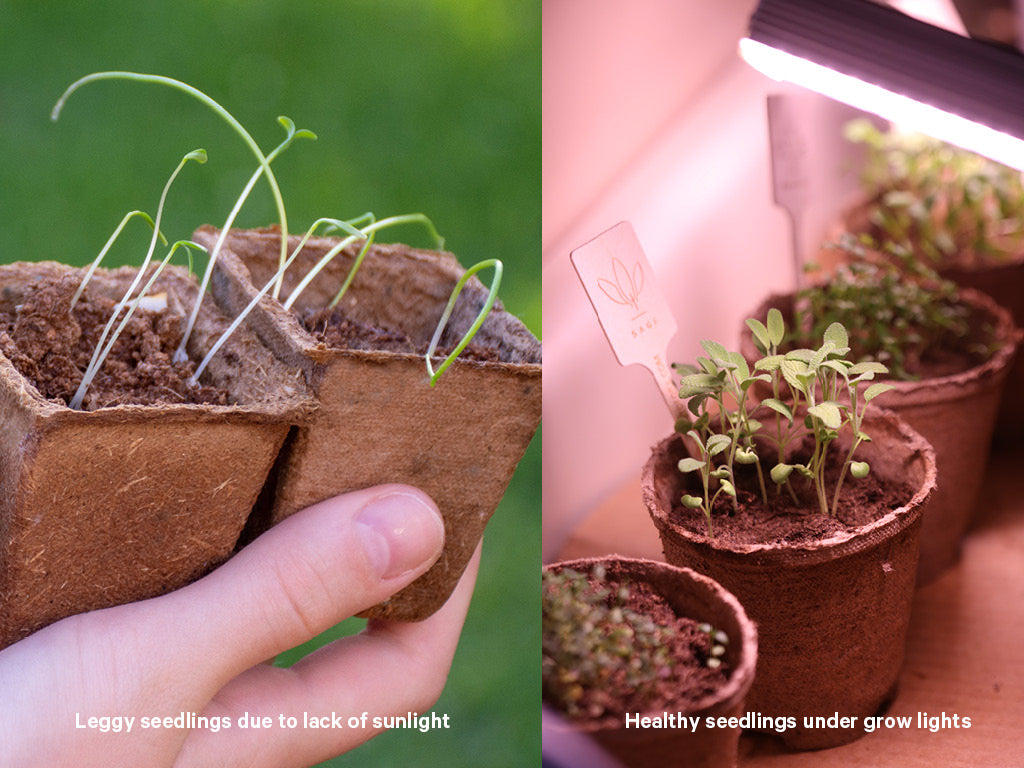
Grow lights let you control the light's intensity and duration, which is super important for plant growth. You can adjust them to mimic the natural rise and fall of the sun, giving your plants a more natural growth environment.
Types of Grow Lights
There are two main types of grow lights you'll want to consider: LED and Fluorescent. Each has its own set of benefits and is suited for different gardening needs.
LED Grow Lights

LED (Light Emitting Diode) grow lights are a popular choice for many indoor gardeners. Here's why:
- They use less electricity compared to other grow lights, which means they're kinder to your energy bills in the long run.
- LED lights last much longer. You won't need to replace them as often as other lights. On average, an LED grow light can last up to 50,000 hours, far outlasting the lifespan of fluorescent bulbs.
- They don't get as hot as other lights allowing a closer placement to your plants without the risk of burning them (though always check the exact height recommendations from your grow light manufacturer as light strengths do vary).
Fluorescent Grow Lights
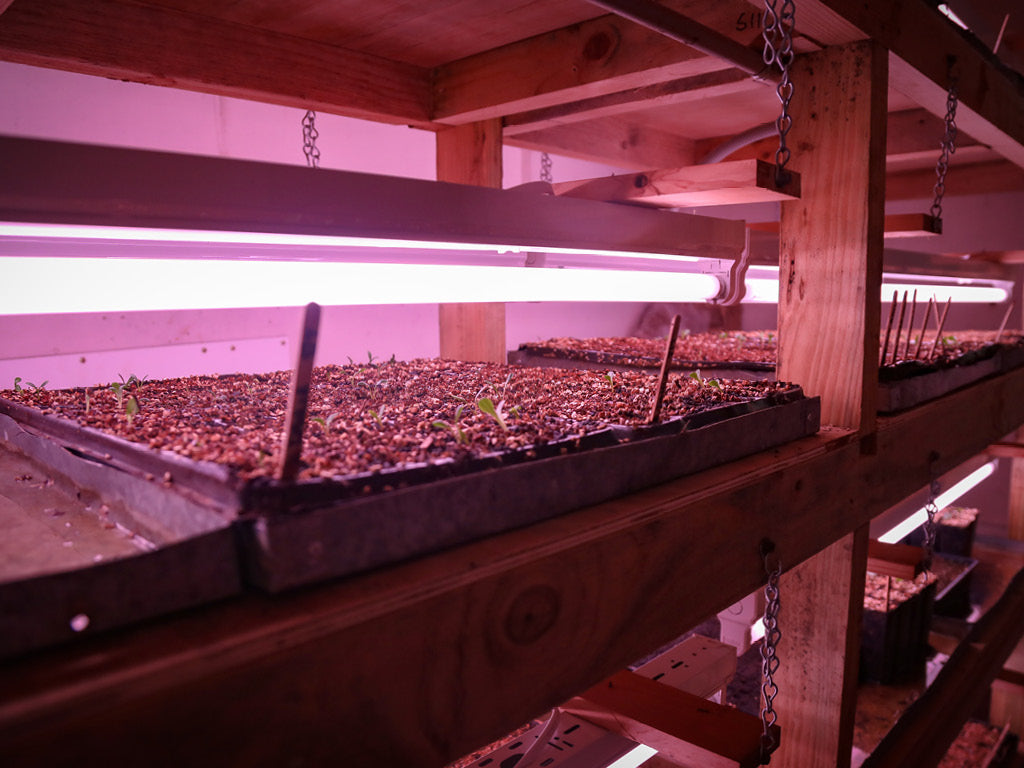
Fluorescent lights, including compact fluorescent lights (CFLs), are another option for indoor gardeners. Here's what makes them stand out:
- Fluorescent lights are generally more affordable upfront compared to LED lights. This makes them a popular choice for beginners or those looking to start a small-scale indoor garden without a significant initial investment.
- Fluorescent lights are great for starting seedlings and growing herbs and greens. They provide enough light for these plants without being too intense.
Choosing the Right Grow Light
Selecting the ideal grow light for your indoor garden involves more than just picking between LED and fluorescent lights. Here are some key factors to consider to help you make the best choice for your plant's needs.
Consider Your Plant Types
Different plants have different light requirements. For instance:
- Vegetables like tomatoes and peppers need a lot of light, so they thrive under brighter, more intense grow lights.
- Herbs and leafy greens like lettuce or spinach can do well with less intense light.
Assess Your Space
Your indoor garden's size will determine the number of lights you need. A small herb garden on your kitchen counter may only need a small LED panel, while a more extensive vegetable setup might require several larger fluorescent tubes or LED lights.
As plants grow, their light needs can change. Adjustable lights can be very useful in terms of height and angle. You can raise the grow light as your plants grow taller, ensuring they always receive the optimal light.
Understanding the Light Spectrum
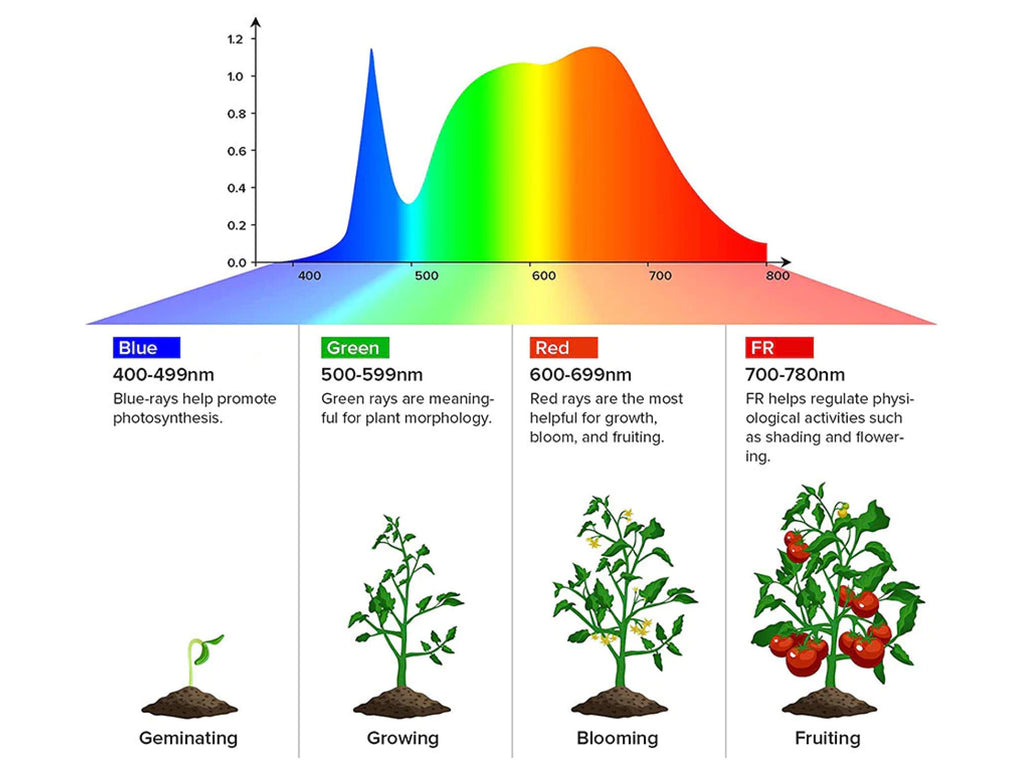
Photosynthesis Light Spectrum Chart courtesy Sansiled
When venturing into indoor gardening, grasping the basics of the light spectrum and its significance to plant growth is important. In the simplest terms, the light spectrum encompasses various colors of light, each with different wavelengths. Plants use these colors in unique ways to fuel their growth and development. Let's break this down into easy-to-understand concepts:
The Essentials of Light for Plants
Plants tap into more than just two segments of the light spectrum for their photosynthesis needs, making use of a colorful array to flourish and thrive:
Blue Light: Much like the refreshing light of a cool morning, blue light is a champion for encouraging vigorous leaf growth and a sturdy plant structure. It plays a pivotal role during the vegetative phase, where plants focus on leaf development and laying down a solid foundation for future growth.
Red Light: Mimicking the warm light of late afternoon sunlight, red light is crucial for the flowering and fruiting stages. It signals plants to shift gears from growing leaves to producing flowers and fruits.
Beyond Blue and Red:
Green Light: Though plants reflect a lot of green light, giving them their vibrant color, this spectrum isn't wasted. Green light penetrates deeper into the foliage than red or blue light, supporting photosynthesis in the lower leaves to ensure a plant's full body contributes to its energy needs.
Far-Red Light: This segment, while less talked about, has its role in regulating plant behaviors like shade avoidance and the timing of flowering. It works in tandem with red light to fine-tune the plant's growth patterns and responses to its environment.
What Grow Light Will Work Best For You?
For those new to indoor gardening, selecting the right type of grow light can seem daunting. Below I’ve laid out all the basic information so you can easily make the right choice based on your needs.
LED Grow Lights
If you are interested in a highly efficient LED, choose one that provides the full spectrum of light, meaning all light, including blue, green and red wavelengths that plants need throughout their life cycles. Under a full spectrum LED you can grow plants from their seedling stage to their flowering or fruiting stage.
Fluorescent Bulbs
If you get a regular fluorescent bulb from the hardware store, this will work perfectly for starting seeds and the vegetative stages of growth. Regular fluorescent bulbs emit blue wavelengths, ideal for the delicate early stages of plant growth and promoting healthy leaf and stem growth. T5 size fluorescent bulbs are slim and ideal for covering large areas. Conversely, CFLs, which stands for compact fluorescent tubes, are smaller and can be used for spotlighting specific plants and fit into any regular light socket.
Light Requirements for Different Plants
Understanding the specific light needs of various plants is crucial for tailoring your indoor garden lighting setup. The intensity of your light varies based on the grow light you chose. To make a grow light more intense, place it closer to your plants, and less intense, place it farther away. Here's a guide to help you match your grow lights to the needs of different types of plants.
High Light Plants

These plants need strong light to produce fruit. Insufficient light can lead to poor fruit development and weak plant structure.
Examples: Tomatoes, peppers, cucumbers and some flowering plants.
Light Needs: These plants typically require about 14-16 hours under grow lights daily.
Medium Light Plants
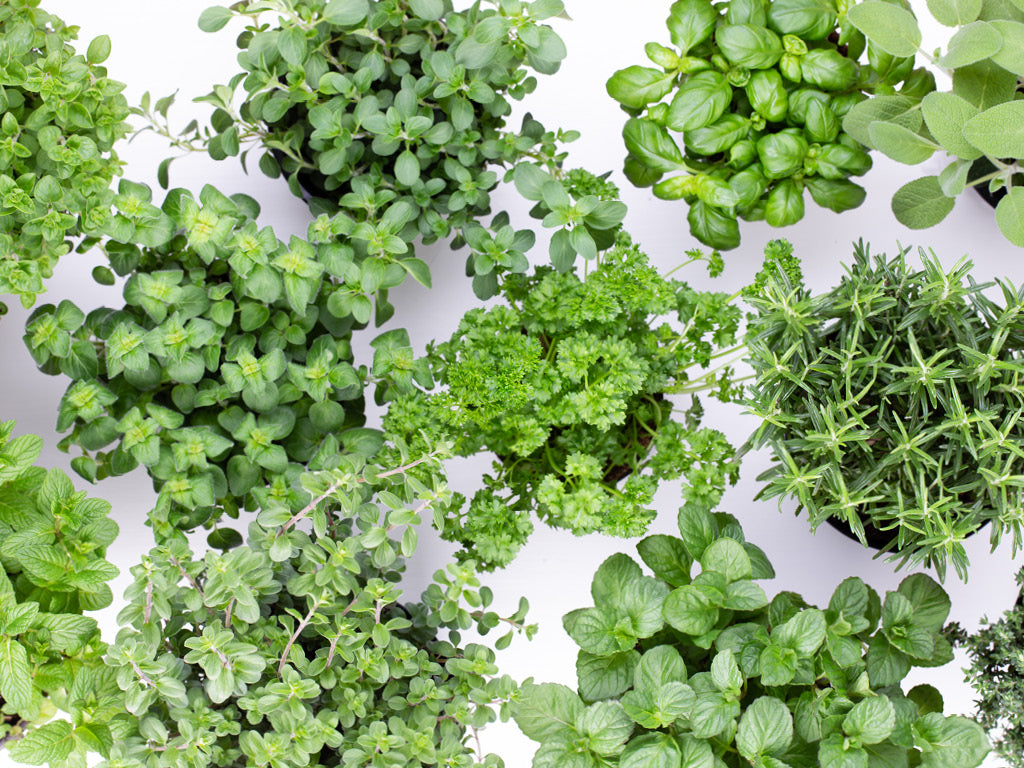
I’ve added herbs to this as when grown under optimal light conditions they tend to have stronger flavors and aromas, enhancing their culinary value. So, though they can grow in lower light, for better yield I recommend using a medium light source.
Examples: Herbs like basil, rosemary and oregano and vegetables like peas, radish and cauliflower.
Light Needs: They generally need around 10-12 hours under grow lights daily.
Low Light Plants
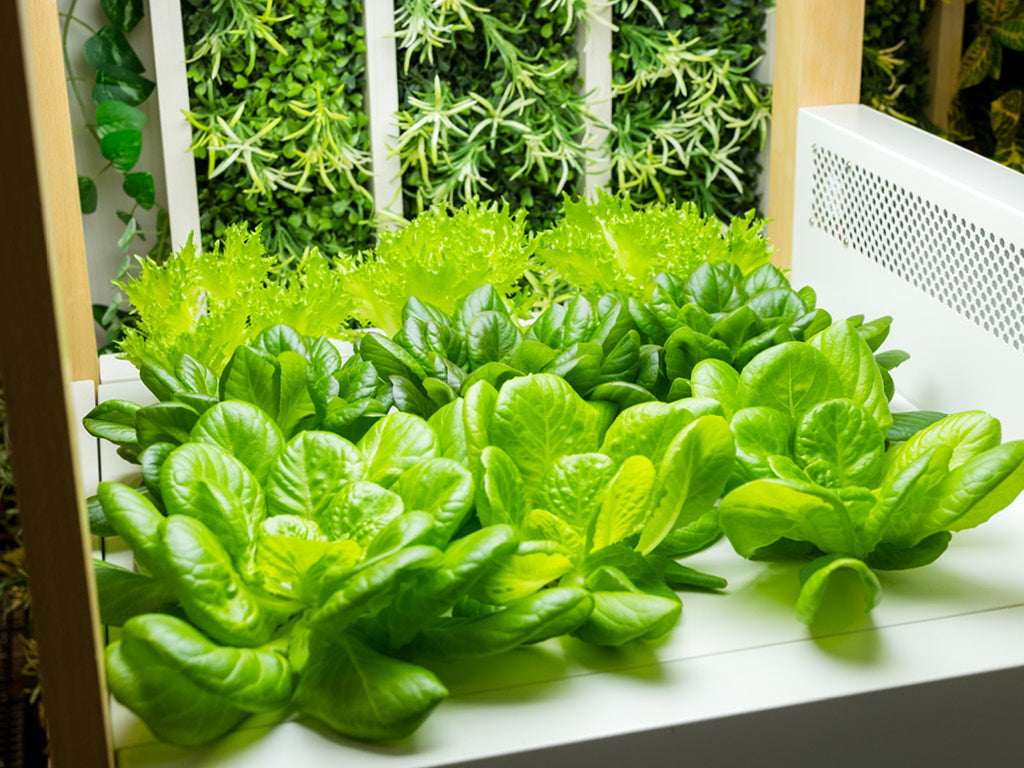
Leafy greens are more tolerant of lower light conditions and can become weak if exposed to overly intense light and heat.
Examples: Leafy greens like lettuce, kale, arugula and spinach.
Light Needs: These plants can thrive with 8-10 hours under grow lights daily.
Using Timers and Controllers
Plants need a certain amount of light daily, which varies by plant type. Using a timer to regulate when your lights turn on and off can help mimic natural day and night cycles, which is vital for plant health.
Automate Light Cycles: Timers are invaluable for automating your light cycles and ensuring consistency. Trust me, it’s easy to forget to turn on your grow light or turn it off, which, in both cases, can be damaging to your plants. Timers make it easy.
Advanced Controllers: For more sophisticated setups, consider using controllers that can adjust light intensity, duration, and even light spectrum based on the time of day or stage of plant growth (available for LEDs only).
Monitoring and Adjusting
Keep an eye on your plants and how they respond to the lighting. Signs of too much light include yellowing or burnt leaves, while insufficient light can cause weak, leggy growth. Adjust the position and duration of your lights as needed.
Regular Observation: Keep a close eye on how your plants respond to changes in lighting. Adjustments may be needed as your plants grow or as environmental conditions change.
Data Logging: Consider keeping a log of your lighting adjustments and plant responses. This can help you fine-tune your setup and learn what works best for your specific plants.
Experimenting and Learning
Trial and Error: Don't be afraid to experiment with different lighting setups and observe the results. Indoor gardening is a learning process; each experience can provide valuable insights.
Setting Up Your Grow Lights
Each grow light comes with its own setup instructions, but the information provided below are general basics you can apply to any setup. Remember, your plants will tell you what they need, so keep an eye out for their signals.

Height Considerations: The ideal height of your grow lights above the plants varies based on the type of plants you're growing and the specific intensity of your lights. The goal is to place the lights close enough to bathe your plants in ample light, yet far enough to prevent any harm from excessive heat or light intensity. For example, fluorescent lights, which are less intense, typically need to be positioned closer to the plants compared to LEDs, which are higher intensity. It's a delicate balance: too close, and you might cause heat stress or light burns; too far, and your plants may not receive enough light to thrive.
Adjusting Height Over Time: As your plants grow, you'll need to adjust the height of your lights to maintain the optimal distance. This ensures that your plants continue to receive the right amount of light without getting damaged. It's helpful to have an adjustable system in place, such as a pulley system or adjustable chains, to make these adjustments easier and more precise.
Coverage Area: Ensuring your grow light covers the entire growing area is essential. Uniform light coverage helps all parts of your plants receive the light they need to perform photosynthesis effectively. This might mean using multiple lights or ensuring that your single light source is placed in a way that its light evenly reaches all plants. Pay attention to the manufacturer's guidelines on coverage area to ensure you're not overcrowding your plants under a light that can't sufficiently support them.
Reflective Surfaces: To maximize light efficiency, consider using reflective materials around your grow area. Walls, ceilings, or even floors lined with reflective material can help bounce light back onto your plants, ensuring even the lower and inner parts receive light. This can be particularly beneficial in confined spaces or if you're working with a limited number of lights.
Conclusion
And there we have it, a bright journey through the world of grow lights! I trust this guide has shed some light on the topic, sparking some bright ideas for your plant-growing adventures. My goal was to simplify this sometimes tricky topic, making it as clear and accessible as possible. If you're left with any questions or have thoughts to share, don't hesitate to reach out. Until our paths cross again.
Happy Growing,

